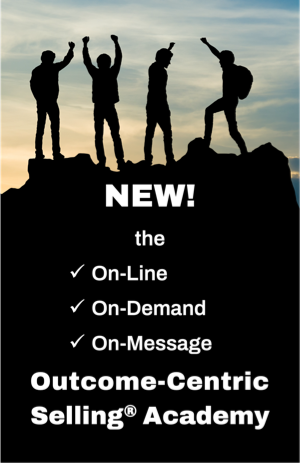The Cost of Inaction
December 24, 2008
It's clear that the current economic climate is causing a great of risk-averse behaviour on the part of B2B prospects. More people are involved in the decision-making process, the buying cycle is taking longer, and many more deals seem to be getting stuck in neither a clear win or a loss, but in "no decision".
We're hearing that Q4 2008 is proving particularly tough for a number of organisations, with serious consequences for revenue production and forecast accuracy. The effects have been compounded by the extended Christmas break - and there's no guarantee that momentum will be restored in the New Year - unless something changes.
It seems that prospects are less convinced by return on investment projections than they used to be - even a positive ROI may not stimulate a positive buying decision. With all the emphasis on the avoidance of risk, I sense that a new factor is coming into play - "the cost of inaction".
The potential cost of inaction is driven by the consequences of the prospect deciding not to deal with a problem right now. It's concerned with the risks associated with delay or with doing nothing - and it's a necessary complement in today's environment to calculating the ROI of a project.
Just as ROI calculations are most credible when they are co-created with the prospect, and built up through the course of the buying process, the same holds true for the cost of inaction.
Savvy sales people - and savvy sales organisations - are probing for the cost and consequence of inaction from an early stage of the buying process. By exploring the impact of not dealing with the issue, they are in a better position to qualify out deals where there is a weak cost on inaction early on in the sales process. Such deals rarely close in today's climate.
Equally important, where a well qualified opportunity exists, they are consciously building up both quantitative and qualitative evidence of the cost of inaction - and getting key members of the prospect's decision making team to acknowledge the risks of deciding to do nothing.
Just as with ROI, it's possible to create tools to help the process along - and provide sales people with the ammunition they need to create a natural sense of urgency and to facilitate the prospect's buying process.
These tools are proving invaluable to companies who want to sell smarter by supporting the process of buying - please drop me a line if you would like to learn more.


Comments